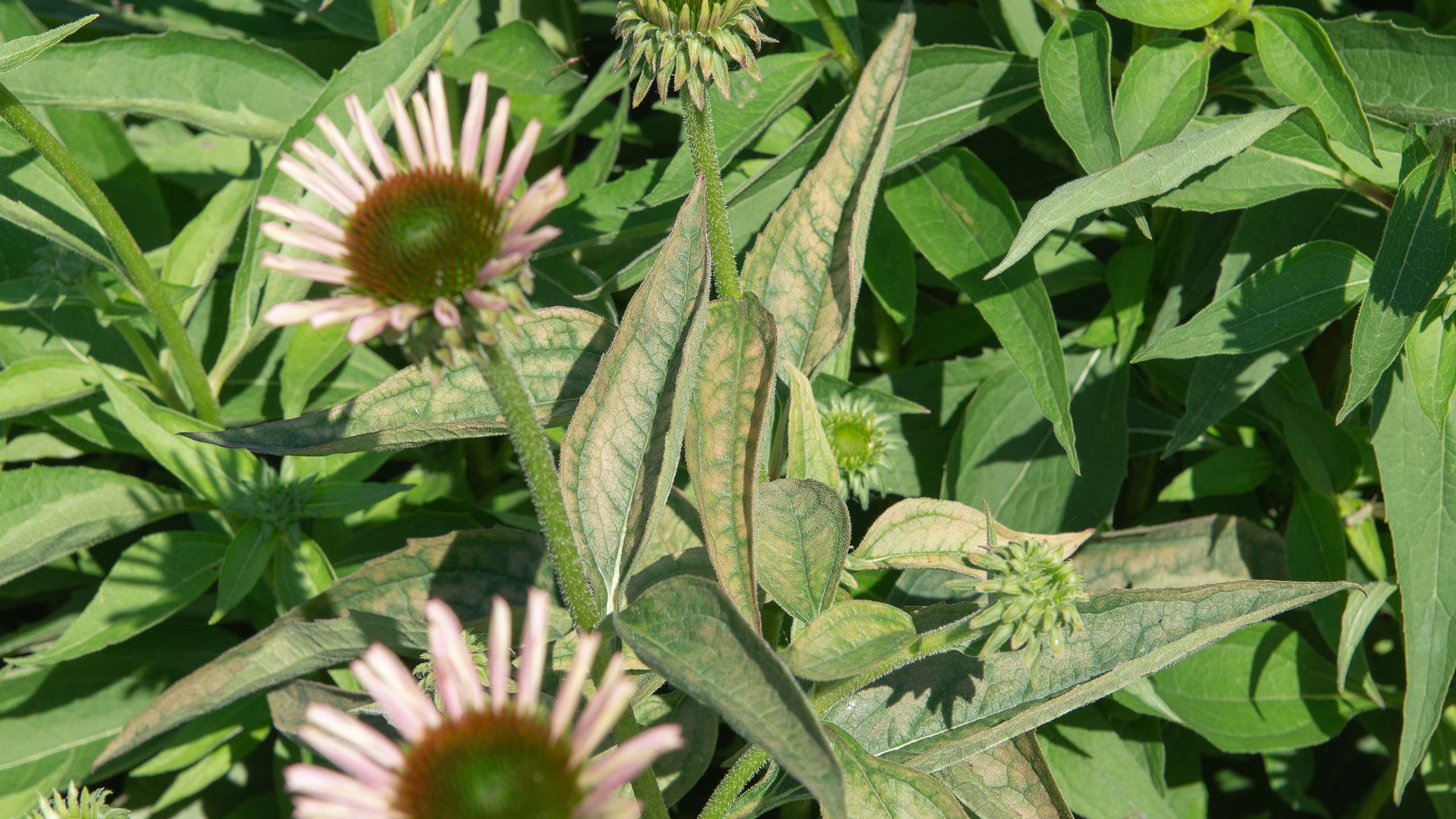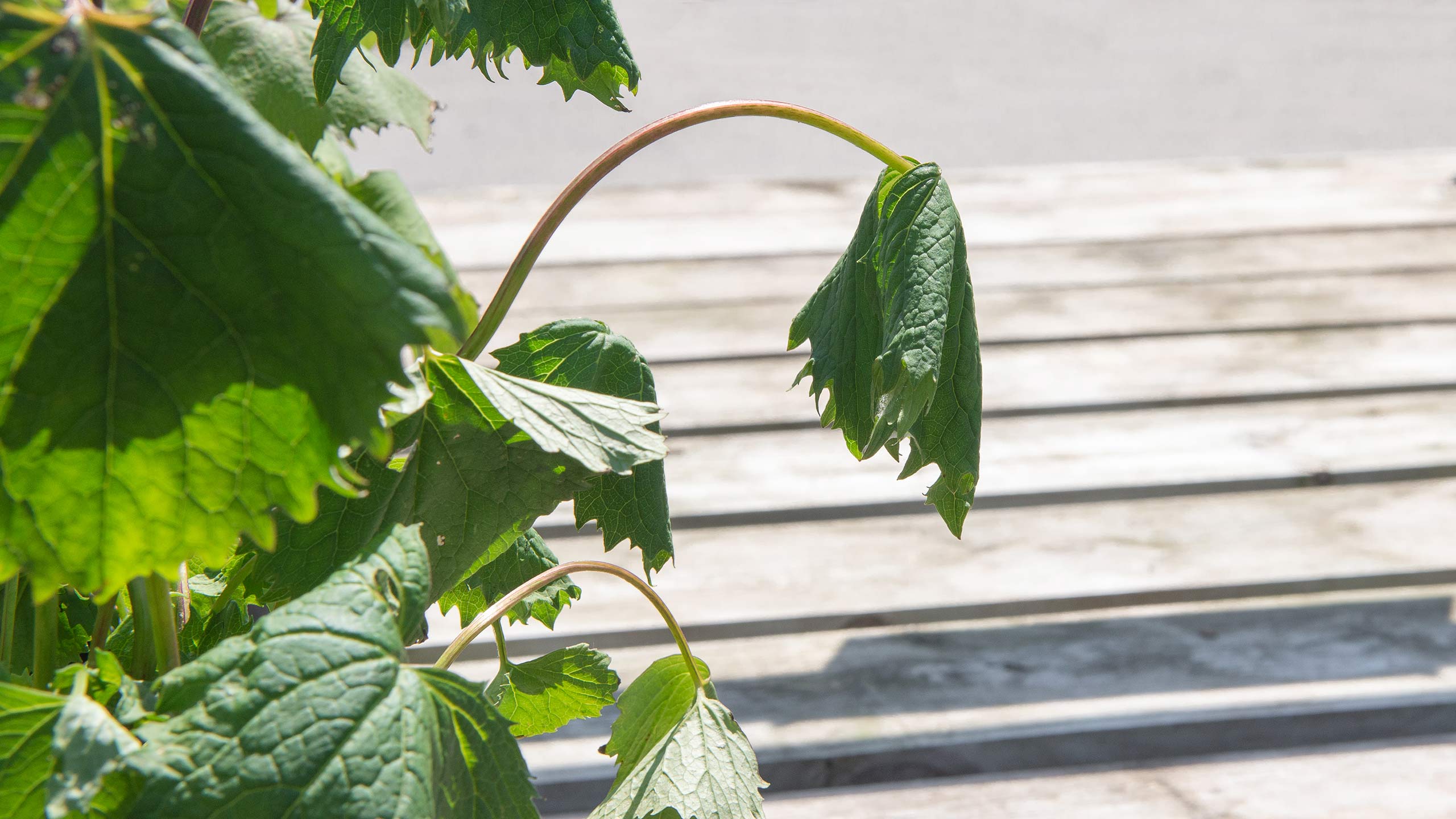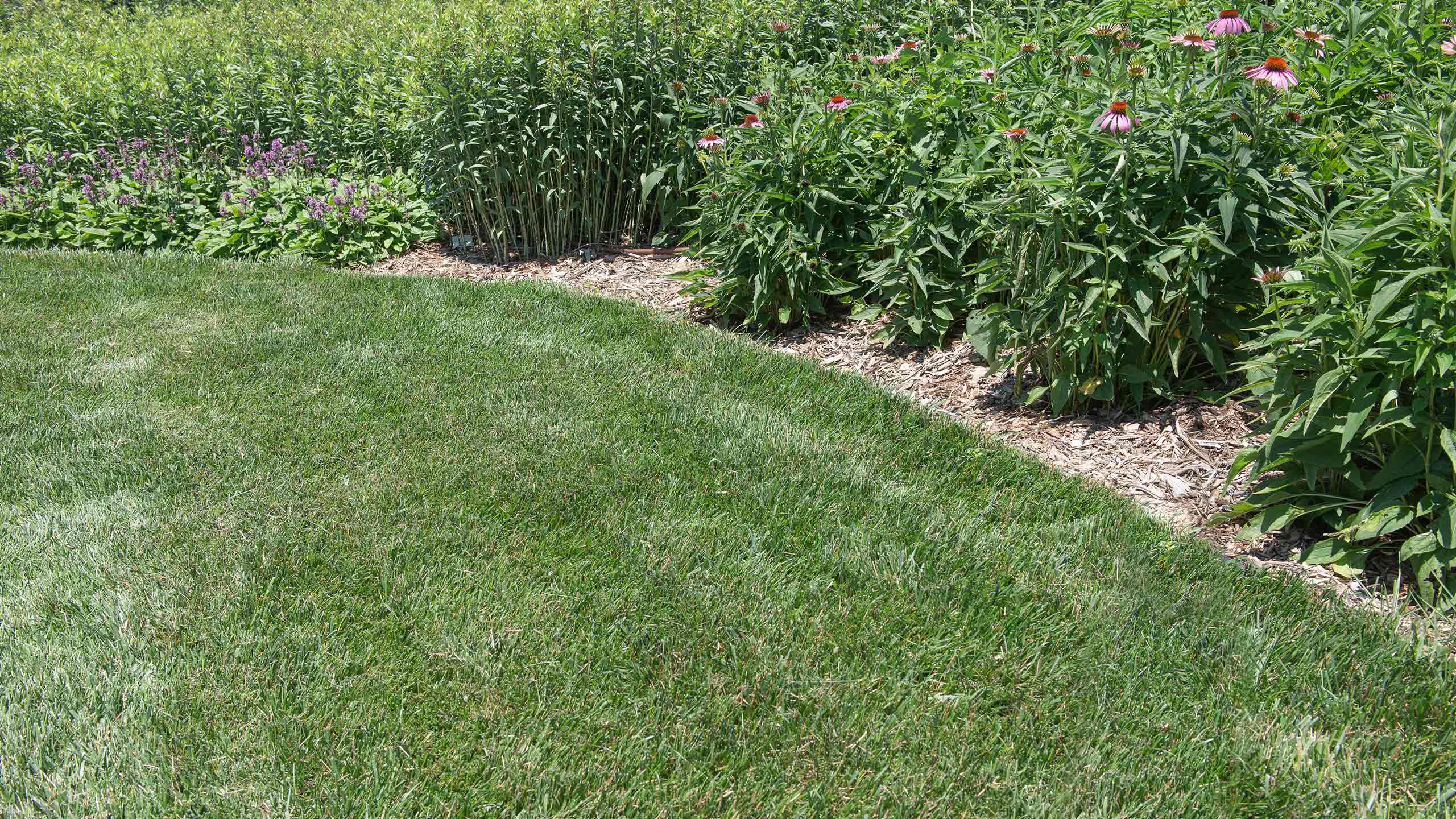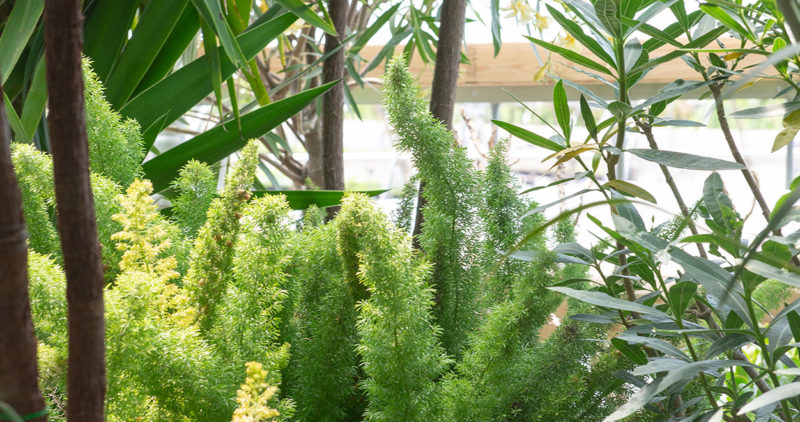
Did you know – when summer temperatures climb into the 90’s and above, our outdoor plants can feel uncomfortable and stressed in the heat just like we do? Here, we share symptoms of heat stress your landscape and garden may be showing – along with expert tips to help them stay happy and healthy all summer.

Sunburn
One of the signs your plant might be experiencing heat stress is sunburn – also called sun scald – which appears as tan or white patches on the foliage. When we think of sun scald, we often imagine shade-loving houseplants reacting to direct sun, but even sun-loving varieties can sunburn if the heat comes on quickly like it did this year. Plant Care team member Ashley Waltemath has noticed sun scald on her perennial Joe Pye weed as well as her zinnia seedlings. There’s nothing we can do to repair the brown spots, but even damaged leaves can still photosynthesize using the green portions that remain. So we don’t suggest trimming the foliage off if you can avoid it – fresh cuts lose even more valuable moisture in the heat. To help your plant recover from the stress of sunburn, provide a little shade if possible during the most intense, mid-afternoon sun, and keep the soil consistently watered – but not soggy. Maintaining a layer of mulch about two to four inches thick will also help conserve soil moisture and keep the roots cool.

Wilting
Some plants wilt in extreme heat – even if their soil is well-watered – but then perk right back up when temperatures cool down again in the evening. Although it seems like it would help, resist the urge to water if the soil is already wet. In this case, the wilting isn’t due to dryness – it indicates that the plant is losing moisture faster than it can possibly take it up. The curling foliage also reduces the plant’s leaf surface area and conserves moisture loss during the hottest part of the day. No amount of extra water will help because to save energy, the plant slows down all its processes – including taking up water – until temperatures cool off again. In fact, watering already-wet soil can promote fungal disease and root rot – two more stresses your hot plant doesn’t need right now. The best plan is to stick to the watering routine each plant prefers and focus on watering in the morning when the plant is less stressed and better able to take up water. Watering in the evening is fine too, but you’ll want to avoid getting too much water sitting on the foliage during the night, which can lead to fungal disease too.
Leaf Drop
Another way some plants conserve energy and reduce moisture loss in high heat is by dropping excess foliage and blooms. Like leaf curling, this is a natural response and not necessarily an indication that anything is wrong. One of our instincts might be to give our plants an energy boost with fertilizer, but this can do more harm than good when it’s hot. Many fertilizers are high in nitrogen, so they’re designed to push lots of new growth. Producing new foliage and flowers is hard work for a plant, and in the heat, our plants are using all the energy they have just to get through the heat wave. So, hold off on fertilizer until temperatures drop back into the 80’s again. Instead, we recommend using Superthrive – this vitamin-packed liquid helps plants combat heat-related stress without encouraging lots of new growth and flowers.

Turf Care Tips
Like any other plant, turfgrass can feel stress in the heat too. Under heat stress, lawns may look dull in color and the grass blades may curl into tubes. To keep your lawn healthy and avoid fungal issues, it’s best to water deeply and less frequently instead of a little every day. Most lawns need about one inch of moisture per week which you can apply all at once or spread out over two or three applications – an example might be to water for twenty-five minutes, every three days. This kind of schedule encourages deep root growth that will help your lawn thrive during hot, dry spells. But sprinkler systems vary in how much water they put out as they run, so to determine exactly how much moisture your lawn is getting, it’s helpful to set out several shallow, wide-mouth containers – like tuna cans – when you water. Using this information, you can adjust your watering schedule to suit your sprinkler system.
And when you mow in the summer, it’s best to set the mower blade height at 3 to 3 ½ inches. Longer grass shades the soil which reduces moisture evaporation. Mowing less frequently also reduces the number of times the grass blades get cut – fresh cuts allow extra moisture loss too. And like with other plants, we recommend holding off on fertilizing your lawn during stretches of hot weather.
Feeling the Heat
Just like us, our plants can feel a little uncomfortable during those hot, humid summer days. Fortunately, they have their own strategies for getting through it – which we can support. For more tips and suggestions, just talk with our team. We’ll help you find ways to help all your outdoor plants do their best in the heat.


